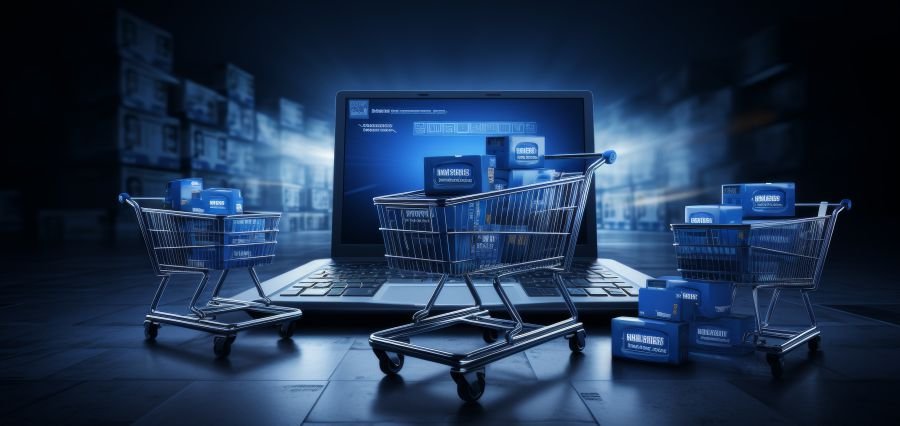The world of e-commerce has witnessed rapid transformation in recent years, with Shopify playing a significant role in enabling businesses to create and manage online stores efficiently. In 2024, Shopify continues to evolve, introducing new features and capabilities to meet the ever-changing demands of the digital marketplace. As online shopping becomes increasingly popular, staying ahead of the latest Shopify development trends is crucial for businesses looking to enhance their operations and user experience. This article delves into the top trends shaping Shopify development in 2024, providing insight into how these advancements can be leveraged to drive growth and innovation in the e-commerce landscape.
Shopify has always been a platform that adapts to emerging technologies and shifts in consumer behavior. In 2024, this adaptability is more important than ever as businesses strive to deliver seamless, personalized shopping experiences to customers. Whether through advancements in AI-driven automation, enhanced mobile optimization, or innovative integrations, Shopify development is setting new standards for the e-commerce industry. Understanding and adopting these trends will not only streamline operations but also offer businesses a competitive edge in the dynamic world of online retail.
Artificial Intelligence and Machine Learning in Shopify Development:
As per Gerrid Smith, CMO of Joy Organics “Artificial intelligence (AI) and machine learning (ML) have become integral to enhancing the efficiency of e-commerce platforms, and Shopify is no exception. In 2024, these technologies are shaping the way businesses interact with their customers, offering personalized recommendations and improving overall store management.”
- AI tools are increasingly being used for automating customer support, making it easier for businesses to address customer inquiries without manual intervention. Chatbots and AI-powered customer service are expected to improve response times and provide accurate solutions, enhancing customer satisfaction.
- Machine learning algorithms are also assisting Shopify stores in analyzing consumer behavior and preferences. By utilizing data-driven insights, businesses can offer personalized shopping experiences, from product recommendations to dynamic pricing strategies tailored to individual customer profiles.
Additionally, AI and ML are playing an essential role in streamlining operations. Predictive analytics powered by machine learning is helping businesses forecast demand, manage inventory, and reduce waste. With AI, Shopify stores can now optimize their supply chains and make data-driven decisions that improve efficiency and reduce operational costs.
AI-driven tools are also being integrated into marketing strategies, allowing businesses to segment their customer base more effectively and deliver targeted ads that resonate with specific groups. The automation of marketing tasks, such as email campaigns and social media posts, further contributes to operational efficiency while maintaining personalization.
Enhanced Mobile Optimization for Shopify Stores:
Mobile shopping has been on the rise, and in 2024, mobile optimization is at the forefront of Shopify development. With more consumers using smartphones to browse and shop online, it is crucial for Shopify stores to deliver a seamless mobile experience.
- Shopify developers are focusing on mobile-first design principles, ensuring that online stores are optimized for smaller screens without compromising functionality. Features like fast loading times, intuitive navigation, and responsive layouts are becoming standard expectations for mobile users.
- Mobile payment options are also expanding, with digital wallets such as Apple Pay, Google Pay, and PayPal becoming more prevalent. Shopify’s integration with these payment gateways ensures that customers can complete transactions quickly and securely, reducing cart abandonment rates.
In addition, mobile apps for Shopify stores are gaining popularity as businesses seek to engage customers directly on their devices. These apps offer enhanced features, such as push notifications, in-app messaging, and personalized promotions, which foster customer loyalty and increase conversion rates.
Another key trend is the rise of Progressive Web Apps (PWAs). These apps combine the best features of mobile websites and native apps, offering a fast and engaging user experience without requiring users to download an app. Shopify developers are increasingly adopting PWAs to enhance the mobile shopping experience, making it more convenient and accessible for customers.
Shopify’s Focus on Sustainability and Eco-Friendly Features:
“Sustainability is becoming a top priority for consumers, and Shopify is taking steps to help businesses incorporate eco-friendly practices into their operations. In 2024, Shopify’s focus on sustainability is influencing development trends, with tools and features that promote environmentally conscious shopping.” – Leo Baker, Chief Technology Officer at Vendorland
- Shopify’s Carbon Offset App allows businesses to calculate and offset their carbon emissions, helping them reduce their environmental impact. By offering customers the option to participate in these efforts, stores can attract eco-conscious shoppers.
- Sustainable shipping options are also being integrated into Shopify stores. With partnerships with eco-friendly logistics companies, Shopify businesses can now offer carbon-neutral shipping options, further appealing to customers who prioritize sustainability.
Beyond shipping, Shopify developers are working on reducing the environmental footprint of online stores through energy-efficient hosting solutions and optimized website performance. Faster loading times not only improve user experience but also reduce energy consumption, contributing to a more sustainable e-commerce ecosystem.
In addition, Shopify is encouraging brands to adopt sustainable sourcing practices for their products. Tools that help track the sustainability of supply chains and ensure compliance with ethical standards are gaining traction, allowing businesses to be transparent about their environmental and social impact.
The Growth of Social Commerce on Shopify:
Social commerce is a trend that continues to gain momentum, with platforms like Instagram, TikTok, and Facebook integrating shopping features directly into their interfaces. Shopify is capitalizing on this trend by providing businesses with tools to seamlessly sell products through social media channels.
- Shopify’s integration with Instagram and TikTok Shopping allows businesses to showcase their products within social media posts and stories, enabling customers to make purchases without leaving the app. This creates a frictionless shopping experience and taps into the growing trend of impulse buying on social platforms.
- Shopify developers are also focusing on enhancing social media analytics tools, allowing businesses to track performance and engagement on these platforms. This data can then be used to refine marketing strategies and improve product offerings based on consumer preferences.
Influencer marketing is also being integrated more seamlessly with Shopify stores. By partnering with social media influencers, businesses can promote their products to a wider audience, while Shopify’s tracking tools measure the success of these campaigns in terms of sales and engagement.
In addition to traditional social media platforms, live shopping events are becoming a popular way to engage with customers. Shopify is introducing features that allow businesses to host live shopping events directly on their websites or through integrations with platforms like YouTube and Facebook Live, combining entertainment with the convenience of online shopping.
Shopify’s Advancements in Headless Commerce:
Headless commerce is gaining traction as businesses seek more flexibility in their online store development. Shopify’s headless commerce capabilities are enabling businesses to decouple the front-end and back-end of their stores, offering more customization options and improved performance.
- Headless commerce allows businesses to use Shopify’s powerful e-commerce engine while creating custom front-end experiences using different technologies. This provides developers with more control over design and functionality, resulting in highly customized online stores that cater to specific business needs.
- With headless commerce, businesses can also integrate with various content management systems (CMS) and digital experience platforms (DXP), enabling them to deliver content-rich experiences that go beyond traditional e-commerce sites.
The flexibility of headless commerce also enhances omnichannel strategies, allowing businesses to offer a seamless experience across multiple touchpoints, including websites, mobile apps, social media platforms, and even in-store displays. Shopify’s headless architecture ensures that all customer interactions are consistent and unified, regardless of the channel used.
In addition to improved flexibility, headless commerce also offers performance benefits. By decoupling the front-end from the back-end, businesses can optimize the speed and responsiveness of their websites, improving user experience and potentially boosting conversion rates.
Increased Use of Augmented Reality for Product Visualization:
Augmented reality (AR) is revolutionizing the way customers interact with products in e-commerce, and in 2024, Shopify is embracing this technology to enhance online shopping experiences. AR allows customers to visualize products in their own environments, offering a more immersive and interactive shopping experience.
- Shopify stores are increasingly integrating AR features, allowing users to view 3D models of products, such as furniture or clothing, in real-time. This gives customers a better sense of how items will look or fit before making a purchase, reducing return rates and improving customer satisfaction.
- AR also enhances personalization by enabling customers to customize products, such as trying on virtual clothing or testing out different product configurations, before completing a transaction. This interactive experience builds confidence in purchasing decisions and increases conversion rates.
“Shopify developers are focusing on making AR technology more accessible to small and medium-sized businesses. With Shopify’s AR tools, businesses can create AR experiences without needing extensive technical expertise, allowing them to stand out in the competitive e-commerce space. As AR adoption grows, its potential to transform online shopping will only increase.” Says Sai Blackbyrn, CEO of Coach Foundation
Shopify’s Role in Expanding Subscription-Based Commerce:
“Subscription-based commerce is seeing significant growth, and Shopify is becoming a preferred platform for businesses looking to offer subscription services. In 2024, the trend of recurring revenue models is shaping how e-commerce businesses engage with customers and generate steady income.” Speaks William Westerlund, SEO Expert at Tradeit
- Shopify provides integrated subscription management tools, allowing businesses to offer recurring products or services seamlessly. From meal kits and beauty boxes to digital memberships, businesses can set up and manage subscriptions without the need for external plugins or custom coding.
- Personalization is a key driver of success in subscription-based commerce, and Shopify stores can use customer data to curate subscription offerings based on individual preferences. This ensures that customers receive relevant products, enhancing retention and customer loyalty.
Moreover, Shopify’s analytics tools make it easier to track subscription performance and churn rates. By analyzing these metrics, businesses can adjust their offerings, improve customer engagement, and optimize pricing strategies for long-term profitability.
Growth of Voice Commerce and Smart Assistants in Shopify Stores:
“Voice commerce is becoming a powerful tool in e-commerce, with more consumers using smart assistants like Amazon Alexa, Google Assistant, and Siri to shop online. In 2024, Shopify developers are integrating voice search and voice-enabled shopping features into online stores, making it easier for customers to browse and purchase products using voice commands.” Adds Alex Begum
- Shopify’s compatibility with voice-enabled devices is being enhanced, allowing customers to search for products, check order statuses, and even complete purchases using their voice. This hands-free shopping experience is particularly appealing to consumers who prioritize convenience and speed in their transactions.
- Voice commerce also improves accessibility, making it easier for individuals with disabilities or those who prefer voice interaction to navigate online stores. Shopify’s integration with smart assistants opens new avenues for businesses to reach a wider audience and improve customer satisfaction.
As voice commerce continues to evolve, Shopify stores are expected to optimize their product listings and content for voice search, ensuring that their products are easily discoverable through voice-enabled devices. This trend is poised to redefine the shopping experience and further integrate technology into everyday purchasing habits.
Conclusion:
In 2024, Shopify development is defined by technological advancements and shifting consumer expectations. From AI-powered automation and mobile optimization to sustainability and social commerce, the platform is continually evolving to meet the needs of businesses and their customers. As the e-commerce landscape becomes more competitive, adopting these trends will be essential for businesses looking to stay relevant and thrive. Shopify’s commitment to innovation ensures that it remains at the forefront of e-commerce development, providing businesses with the tools and features they need to succeed in an ever-changing digital environment.
By embracing these Shopify development trends, businesses can enhance customer engagement, streamline operations, and create a more personalized shopping experience. As e-commerce continues to grow, those who adapt to these changes will be better positioned to capture new opportunities and achieve long-term success in the digital marketplace.
Read Also: Comprehending the Best Classroom Management Strategies









